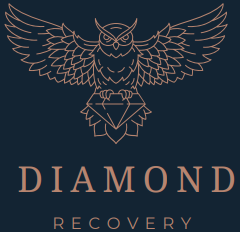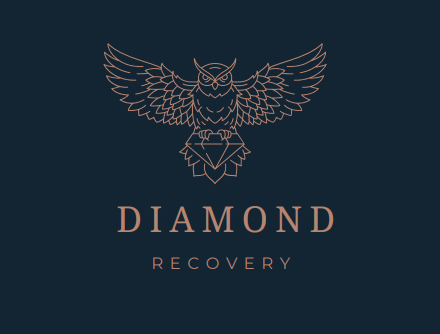Imagine for a moment a young woman, four weeks sober, sitting alone in a treatment center, head in her hands, overcome with shame and loneliness. Suddenly, a golden retriever nudges her knee, tail wagging, begging for attention. For the first time since she’s been in recovery, she smiles.
Recovery from addiction and mental health struggles is a long road, one that requires strength, support, and often, a little extra help from unexpected places. For many people, that help comes in the form of a wagging tail, gentle nuzzle, or the quiet presence of a compassionate animal, this is animal-assisted therapy. Animal-assisted therapy, or AAT, is a structured, healing partnership between humans and animals, guided by professionals to rebuild lives. Far more than a comforting pet, AAT taps into the unique power of creatures like dogs, horses, and even dolphins to soothe, motivate, and mend.
In this article, we will journey through AAT’s rich history because, for centuries, animals have provided companionship, emotional support, and even therapeutic benefits. From its roots in ancient Greece to its modern role in recovery, we will uncover how and why it has become such a valuable part of addiction and mental health recovery. Spotlighting ten of these remarkable therapy animals and their special gifts, we will introduce you to the many creatures utilized in AAT. Looking at two of the most popular animals, we will closely examine what makes them uniquely beneficial for those in a residential treatment center and uncover why this approach is transforming addiction and mental health treatment. By the end, you will see how these animal allies are becoming vital companions in the fight for a fresh start.
What is Animal-Assisted Therapy?
Animal-assisted therapy, also known as AAT, is a therapeutic intervention that includes the use of an animal in the treatment process, guided by a trained professional, with structured interactions between the animal and the person to reach specific goals in therapy.
The purpose of animal-assisted therapy is to improve a person’s overall physical, emotional, social, or cognitive well-being. AAT is designed to achieve specific goals like reducing stress, improving mood, improving communication skills, or helping with physical rehabilitation, depending on the individual’s needs.
Pet ownership and support animals are different from AAT. Although pets and support animals offer companionship and comfort, they are not used in conjunction with structured therapies, making animal-assisted therapy uniquely different.
Many people may think of animal-assisted therapy as a 21st-century treatment, but the truth is, AAT has been around for ages.
The History of Animal-Assisted Therapy
As early as 600 B.C., the Greeks were the first to take notice that animals, specifically horses, had the unique ability to lift the spirits of seriously ill patients, and they used them for this purpose.
It wasn’t until the 1600s that we began to see historical mention of animal-assisted therapy again. In Europe, doctors again turned to horses to improve the mental and physical health of their patients with their belief that horseback riding could improve balance, coordination, and overall well-being.
By the mid-1800s in England, Florence Nightingale was observing that smaller animals could reduce anxiety in her patients.
During World War I (1914-1918), the Red Cross trained dogs to locate injured and missing soldiers and to stay with them, providing comfort until medical help arrived. By World War II (1939-1945), the use of therapeutic dogs expanded further as organizations began to recognize the emotional benefits of dogs for soldiers dealing with stress, trauma, and loneliness.
In the 1960s, Dr. Boris Levinson, a United States psychologist, formalized animal-assisted therapy after discovering the positive impact his dog had on his young patients.
By the 1990s, AAT had become accepted worldwide.
Today, AAT is accepted as a recognized field and is widely used to treat many different physical, mental, and emotional problems. Since its origins in ancient Greece, used as an informal comfort, animal-assisted therapy has evolved into an evidence-based practice using trained animals. Today, we see AAT being integrated into hospitals, rehabilitation facilities, and schools using a wide variety of animals, each with their own special and unique characteristics.
10 Animals Used in Therapy and Their Unique Qualities
1. Dogs: Uniquely qualified due to their trainability, dogs are emotionally sensitive and capable of forming deep bonds with humans, making them responsive to many different therapeutic needs. They are loyal, intuitive, and provide unconditional love. Dogs can reduce stress and anxiety, lower blood pressure, and boost motivation.
2. Cats: Cats are independent animals that are easy to work with. They offer a calming presence and are ideal for low-energy comfort for those in settings such as nursing homes or people in recovery seeking quiet, introspective support. Cats offer benefits like reducing stress, lowering heart rates, and promoting a sense of peace for those who prefer cat companionship.
3. Horses: Horses are large and strong but extremely sensitive to human emotion. Horses can help an individual develop trust and emotional awareness in a very powerful and physical way. Horses can help improve self-esteem, enhance physical coordination, and reduce stress.
4. Rabbits: Rabbits are a good option for those who are afraid of dogs or cats due to their soft, gentle nature and small size. They offer benefits like reducing stress, encouraging nurturing behavior, and providing physical comfort that can lower anxiety.
5. Birds: Birds like parrots and canaries are used in AAT to stimulate cognitive engagement with their beautiful colors and vocal interactions. Birds are socially interactive animals that can help improve mood, encourage communication, and reduce feelings of isolation through their lovable energy.
6. Dolphins: Dolphins are very intelligent and extremely playful animals and are known for their ability to connect with humans. Dolphins can provide benefits by enhancing emotional regulation, boosting motivation, and improving physical coordination through swimming therapies.
7. Guinea Pigs: Guinea pigs are gentle and docile animals, making them easy to handle and care for. They offer benefits like reducing social anxiety, promoting relaxation through petting, and encourage responsibility by assuming a caretaker role for the animal.
8. Reptiles: Not all, but most reptiles have calm demeanors and a low-energy presence with unique textures and colors. Reptiles can captivate curiosity and reduce fear or stress through gradual exposure. Reptiles can be beneficial by improving focus, encouraging curiosity, and providing a soothing, meditative interaction that can lower anxiety.
9. Ferrets: Ferrets have a playful, curious nature and are small and agile, offering inspiring engagement and lighthearted interactions. Ferrets can boost mood, encourage physical activity through play, and reduce stress with their funny antics.
10. Bees: Bees may not be the first thought that comes to mind when we discuss animals, but they are, in fact, a part of the animal kingdom. Beekeeping offers an escape from stress and promotes mindfulness. The humming of the hive creates a calming and meditative environment and helps to develop a sense of purpose and responsibility.
Top Therapy Animals: Why They Shine
Dogs: Dogs are the most popular animals for AAT due to their gentle temperament, high trainability, and well-documented therapeutic benefits. They are loyal, affectionate, and intuitive, making them excellent companions for people in recovery. Dogs are one of the most easily trained animals and can be trained to respond to emotional distress, provide deep pressure therapy, and follow commands that assist individuals with anxiety, PTSD, or depression. Years of research support the mental and physical health benefits of canine-assisted therapy, like reduced stress hormones, increased feel-good hormones, lower blood pressure and heart rate, decreased anxiety and depression, and encouraged social interaction and communication.
Horses: Horses are one of the most widely used animals in AAT, also known as Equine Therapy. Due to their temperament, sensitivity to human emotions, and ability to facilitate emotional and physical healing, horses shine bright as a top animal for AAT. Unlike smaller therapy animals, horses offer a powerful yet nonjudgmental presence. Their size requires individuals to develop trust and confidence, helping them work through fears, trauma, and emotional barriers in deeply transformative ways. The combination of temperament, trainability, and therapeutic effectiveness makes horses one of the most valuable animals in AAT, especially for those in addiction recovery, mental health treatment, and trauma therapy.
Benefits of AAT in Residential Addiction Treatment and Mental Health Recovery
1. Using AAT in residential addiction and mental health recovery offers a wide range of benefits such as:
Emotional: AAT helps to improve emotional intelligence and positively regulate emotions. It reduces loneliness and boosts mood by releasing feel-good hormones.
Psychological: AAT has been proven to lower stress, build self-esteem, and create a nonjudgmental environment.
Social: Participating in activities like canine-assisted therapy or equine therapy helps to encourage building trust and increasing communication, and is critical for rebuilding relationships.
2. By reducing stress, building emotional resilience, and developing trust and connections, AAT promotes healthy coping mechanisms for those in recovery, helping to support long-term healing and relapse prevention.
3. Like addiction, mental health issues like depression and PTSD equally benefit from AAT.
4. Programs like residential addiction recovery in Salt Lake City integrate animal-assisted therapy into their programs with structured sessions combined with traditional therapies and holistic modalities.
5. Finding treatment with AAT is important to stimulate engagement, reduce dropout rates, and improve overall emotional and physical well-being.
From the ancient Greeks lifting spirits with horses to modern treatment centers where dogs and dolphins mend broken lives, animal-assisted therapy has evolved into a cornerstone of addiction and mental health recovery. These remarkable allies offer more than companionship; they provide a lifeline to emotional resilience, social connection, and lasting healing. For anyone battling addiction or mental health challenges, AAT stands as proof that recovery is not a road to travel alone. Consider seeking a program that utilizes these unsung heroes, and let their gentle presence guide you toward a fresh start.
Infographic


















